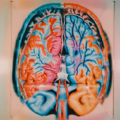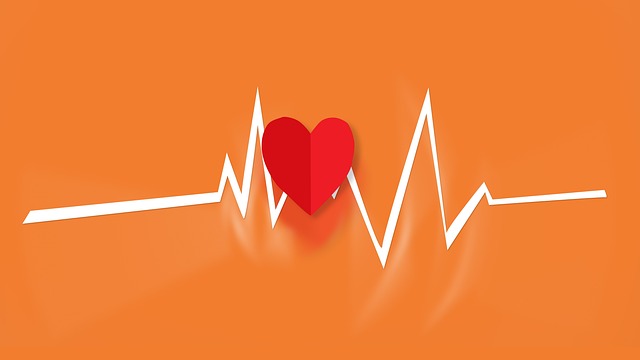There is nothing better than hypnosis to show the overall effect of the brain on the body. My own experience with it began in medical school in England many years ago. We were treated to a lecture by a Professor of Psychology, whose name I have long forgotten. Out of the class of students, two of us were chosen randomly. I will call the other student Tony. To our surprise, we were sent out of the classroom, while the professor instructed the rest of the class. They were told to put their right elbow on the desk in front of them with the hand raised. On a signal from him they were all to bring their hands down with a bang on the desk. When we were asked to return to the classroom we were instructed to face the class with our right arms raised in a similar fashion. The professor clapped his hands once, the signal given to the class in our absence. I remember very well that Tony brought his hand down in the same way as the rest of the class, while I was completely puzzled and did nothing. The professor explained that Tony was likely to be a better hypnotic subject and was used as the “guinea pig”. A portable bed was produced and Tony was instructed to lie down on his back on this. Under hypnosis, he was told by the professor to contract every muscle in his body. I still remember seeing the extraordinary sight of all those muscles visibly contracting. The professor then took hold of Tony’s heels and lifted them to an angle of about 45°. His entire body remained absolutely rigid and he pivoted from the back of his head as though he were made of steel. It was truly an amazing sight and virtually impossible in a normal state of consciousness.
After I graduated I became a family doctor under the British National Health Service and was practicing in a small town in Lincolnshire. I had been doing some reading about hypnotherapy and I tried it with a patient that had ulcerated her own leg by persistent scratching, a condition known as dermatitis artefacta. I induced hypnosis by repeating the words “you are going into a deep deep sleep” in a low soft voice. I then gave her a post hypnotic suggestion that she would stop scratching. But in addition, I said, “after I awaken you, go into the waiting room to look at the clock and come back to tell me the time”. When she got to the door of the waiting room, I said to her “where are you going?” And she replied that she was going to look at the clock in the waiting room to tell me the time. I told her that this was no longer necessary and she stood there with a puzzled look that could only be resolved by going and looking at the waiting room clock. I cannot remember whether she stopped scratching her ulcerated leg. Then I had a patient with a dermatological condition known as lichen planus. This is a condition where the body is covered with intensely itchy scales and she had been under the care of a dermatologist for two years without any success. I gave her a posthypnotic suggestion that the scales would fall off. When she undressed to get into bed that evening, all the scales fell off. Soon after this event I emigrated and did not continue to use hypnotherapy in my later development. I do, however, remember a story about hypnosis that is even more curious. The patient had one shoulder lower than the other and continuously jerked them. After hypnosis he thanked the hypnotist for making him better, although the physical condition was actually worse. His brain evidently accepted that he was better, even though the physical demonstration was worse. The old-fashioned statement “mind over matter” speaks the truth.
We know now that a hypnotist is not necessary. Self-hypnosis is possible by learning a simple technique. It is a state of mind that is hard to define, but it more than adequately tells us that the brain rules the functions of the body. Watch the assortment of hand movements used by many speakers at the podium. They are using “body language” even though it is not meaningful to the speaker’s audience by itself.
Hypnosis has been used in medicine for nearly 250 years. It has been stated that 80% of humans are moderately susceptible to being hypnotized, 10% are easily hypnotized and 10% are refractory (Wikipedia). Its uses and potential uses in emergency care could become a powerful and safe nonpharmacologic addition to emergency care and in remote medical settings. It could provide analgesia for existing pain such as fracture and joint procedures or in obstetric care. It is safe, fast, and cost effective and its failure to be accepted is due, in part, to the myths surrounding it and its association with alternative-complementary medicine (A hypnotic suggestion: review of hypnosis for clinical emergency care). There are a surprising number of medical papers being published, reporting hypnosis in the treatment of skin diseases. As anyone who has suffered with one of the many skin diseases knows only too well, the dermatologist’s efforts are prolonged, uncomfortable and often unpredictable like my patient with lichen planus. This website has published many articles that deal with various aspects of “alternative-complementary medicine”. It could be a huge asset to the medicine of the future.
We Need Your Help
More people than ever are reading Hormones Matter, a testament to the need for independent voices in health and medicine. We are not funded and accept limited advertising. Unlike many health sites, we don’t force you to purchase a subscription. We believe health information should be open to all. If you read Hormones Matter, like it, please help support it. Contribute now.
Yes, I would like to support Hormones Matter.
Image by Gerd Altmann from Pixabay.












